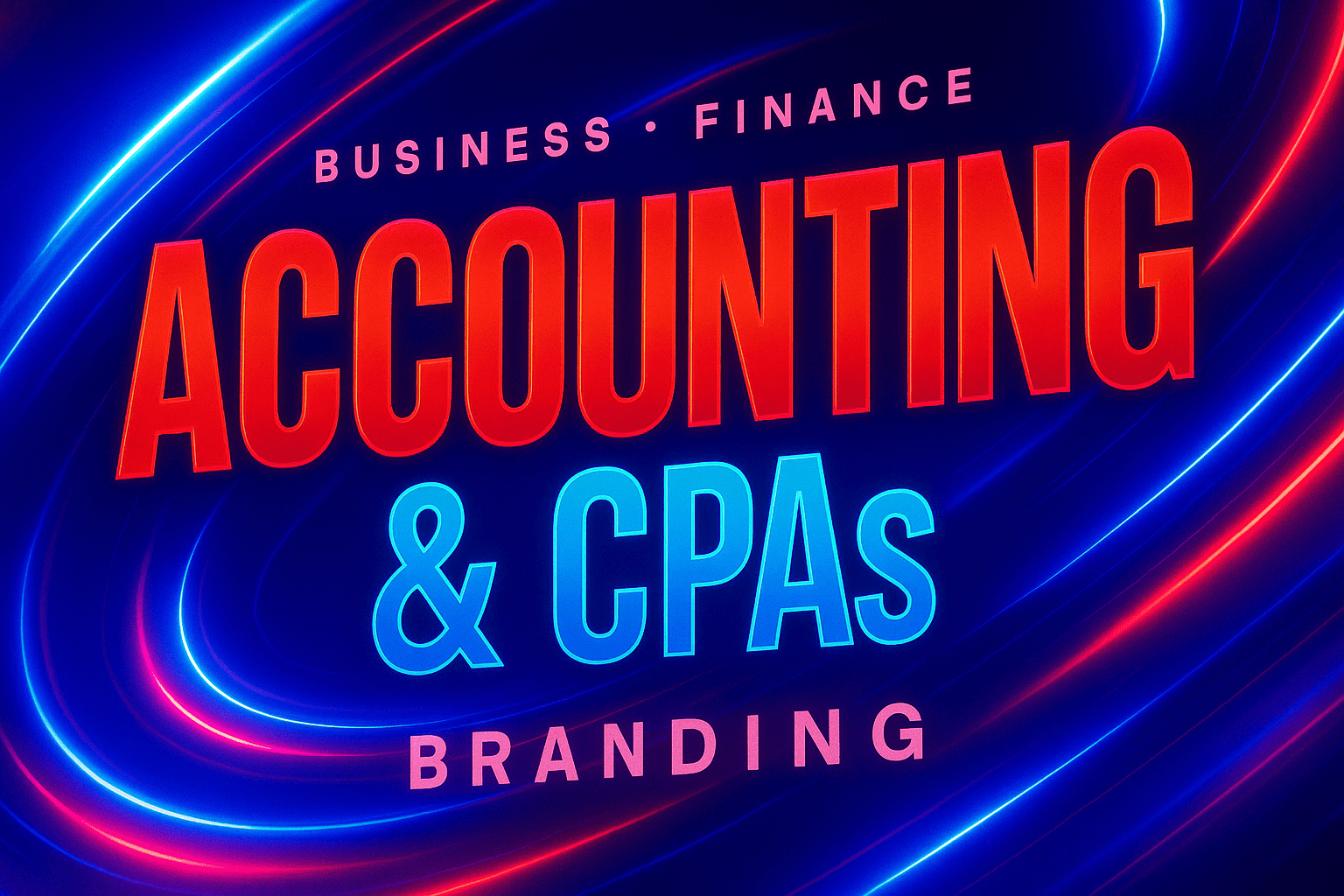Advanced Branding Strategies That Help SaaS & Tech Startups Scale Faster
by Design Delulu Editorial · October 30, 2025
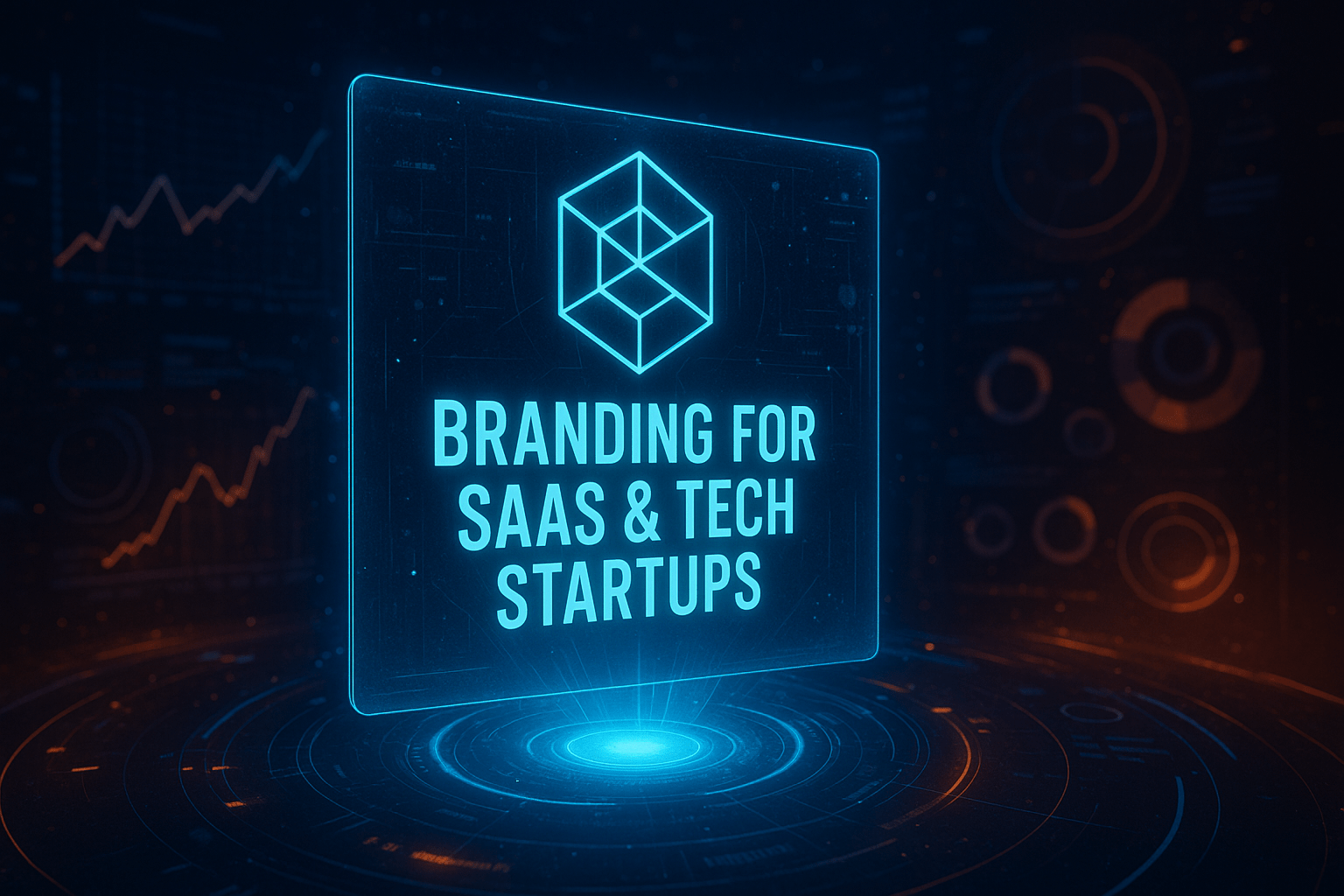
Smart, fast, and measurable. Here's how Branding helps SaaS & Tech Startups win.
In today's crowded SaaS landscape, strong branding isn't just about having a nice logo—it's the strategic foundation that determines whether your startup gets lost in the noise or commands premium pricing. With over 30,000 SaaS companies competing for attention, advanced branding becomes the difference between blending in and standing out. When prospects can't differentiate between similar products, they default to price comparisons, eroding your margins and commoditizing your innovation.
Advanced branding for tech startups goes beyond visual identity to create a comprehensive system that influences every customer touchpoint, from your first impression to long-term retention. It's about building a memorable position in your market, establishing trust through consistency, and creating emotional connections that turn users into advocates. The startups that invest in strategic branding early grow 3-4x faster than competitors who treat it as an afterthought, because strong brands reduce customer acquisition costs, increase lifetime value, and create pricing power that fuels sustainable growth.
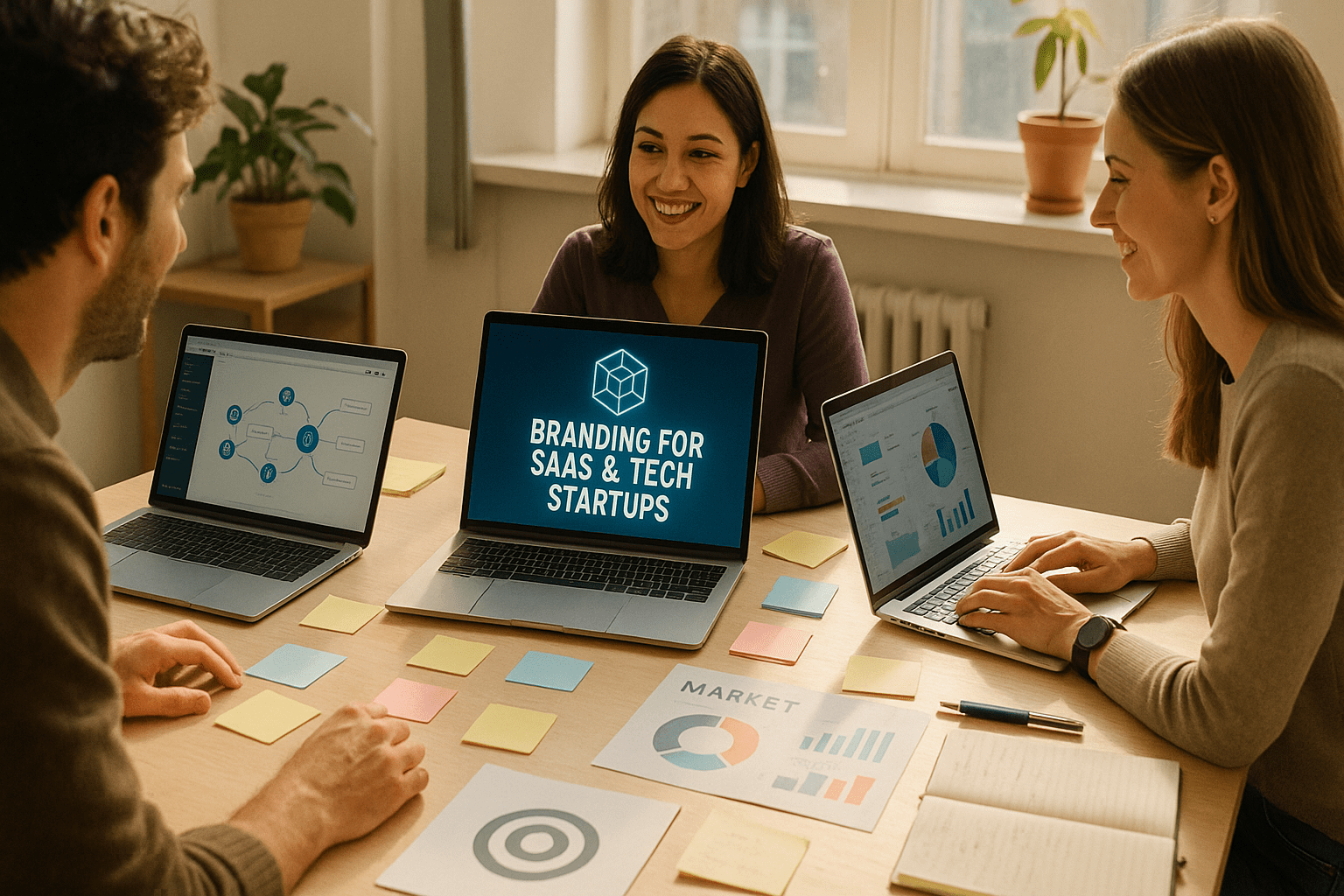
Why Traditional Branding Fails SaaS & Tech Startups
Most branding agencies approach SaaS companies with the same playbook they use for consumer products or traditional businesses—and it falls flat. SaaS branding requires understanding complex buyer journeys with multiple stakeholders, long sales cycles, and technical decision-makers who value substance over style. Your brand needs to speak to both the C-suite who signs the contract and the end users who will champion or resist your product.
The challenges are unique to the space:
- Abstract value propositions: Unlike physical products, SaaS solutions solve problems that are often invisible until they're fixed. Your branding must make intangible benefits tangible.
- Rapid product evolution: Your features change monthly, but your brand needs stability. Building a brand around specific capabilities creates constant misalignment.
- Technical complexity: You need to communicate sophisticated functionality without overwhelming prospects or oversimplifying to the point of seeming trivial.
- Trust barriers: Asking companies to migrate critical operations to your platform requires overcoming significant skepticism about reliability, security, and longevity.
The most successful tech startups build their brands around outcomes and transformation rather than features. They create brand systems flexible enough to accommodate product pivots while maintaining core positioning. They invest in thought leadership and community building that establishes authority before the sales conversation even begins.
The Advanced Branding Framework for High-Growth Startups
Advanced branding for SaaS isn't a creative exercise—it's a strategic business initiative with measurable impact on revenue. Our framework integrates positioning, messaging, visual identity, and brand governance into a cohesive system designed for scale.
Phase 1: Strategic Foundation
Market positioning and competitive differentiation form the bedrock. This phase involves deep competitive analysis, identifying white space in your category, and defining your unique point of view. We map your positioning against alternatives, not just competitors—because prospects often compare you to spreadsheets, internal builds, or doing nothing at all.
Key activities include:
- Stakeholder interviews to uncover authentic differentiation
- Customer research revealing language patterns and pain points
- Competitive positioning maps showing opportunity gaps
- Category definition (are you creating a new category or winning an existing one?)
- Value proposition architecture that resonates with each buyer persona
Phase 2: Brand Architecture & Messaging
With positioning locked, we build the messaging hierarchy and narrative framework that will guide all communications. This includes your brand story, core messages for different audiences, proof points, and the emotional through-line that makes your brand memorable.
The messaging system includes:
- Brand narrative: The overarching story of why your company exists and the change you're creating
- Core messaging pillars: 3-5 key themes that appear consistently across all content
- Audience-specific messaging: Tailored value propositions for each persona and buying stage
- Proof architecture: How you substantiate claims with data, case studies, and social proof
- Messaging guidelines: Voice, tone, and style principles that maintain consistency
This phase produces a comprehensive messaging guide that becomes the single source of truth for marketing, sales, product, and customer success teams.
Phase 3: Visual Brand System
Visual identity brings your strategic positioning to life. For tech startups, this means creating a design system that communicates innovation and reliability simultaneously—looking cutting-edge without seeming unstable or experimental.
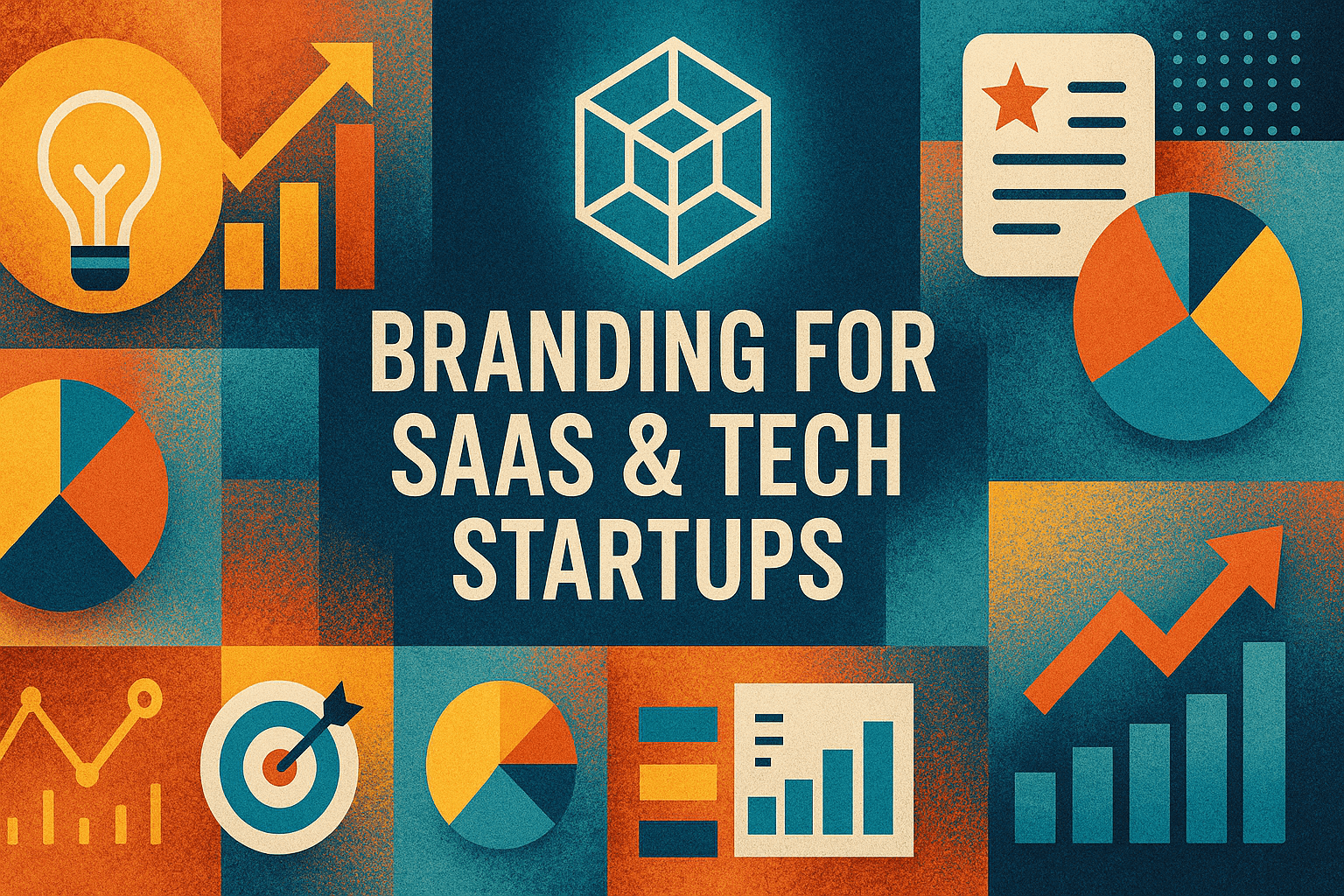
Our visual system includes:
- Logo system: Primary mark, variations, and usage guidelines for every context
- Color palette: Strategic color choices that support your positioning and ensure accessibility
- Typography: Font pairings that balance personality with readability across interfaces
- Iconography: Custom icon set that simplifies complex concepts
- Photography style: Guidelines for imagery that feels authentic to your brand
- UI patterns: Design tokens and components that extend to product interface
- Motion principles: Animation guidelines that enhance user experience without distraction
The result is a living design system documented in tools like Figma, with corresponding code libraries for implementation across web properties and product.
Phase 4: Implementation & Governance
The best brand strategy fails without proper rollout. This phase focuses on activating your brand across touchpoints and establishing governance to maintain consistency as you scale.
Implementation priorities:
- Website redesign: Your primary digital home reflects the complete brand experience
- Sales collateral: Pitch decks, one-pagers, and case studies aligned to new messaging
- Product interface: Ensuring in-app experience reinforces brand promise
- Content templates: Blog, social, email templates that maintain visual consistency
- Brand guidelines portal: Self-service resource for team members and partners
Governance ensures longevity through brand councils, approval workflows, quarterly brand audits, and continuous education for team members.
Measuring Brand Impact: KPIs That Matter
Advanced branding initiatives must demonstrate ROI. While brand building creates long-term value, smart metrics reveal progress and inform optimization.
Leading Indicators
These metrics show early momentum:
- Brand awareness: Unaided recall, search volume for branded terms, direct traffic growth
- Message resonance: Time on site, content engagement, bounce rates on key pages
- Perception shifts: Survey data on brand attributes before and after rebrand
- Share of voice: Your presence in industry conversations versus competitors
Lagging Indicators
These reveal long-term brand value:
- Customer acquisition efficiency: Decreasing CAC as brand awareness grows
- Deal velocity: Shorter sales cycles when brand trust is established
- Win rates: Increased close rates in competitive situations
- Pricing power: Ability to command premium pricing versus alternatives
- Lifetime value: Higher retention when brand connection is strong
- Employee retention: Lower turnover when team members are proud of brand
We establish baseline metrics before the rebrand and track quarterly progress. Most startups see measurable improvements within 6 months, with compounding effects over 12-24 months as brand equity accumulates.

Common Branding Mistakes Tech Startups Make
Having worked with dozens of SaaS companies, we see recurring patterns that undermine branding efforts:
1. Prioritizing Differentiation Over Relevance
Being different isn't valuable if prospects can't immediately grasp what you do. Your brand must first establish category credibility before claiming uniqueness. Lead with familiar context, then introduce your differentiation.
2. Brand-by-Committee Without Clear Ownership
When every stakeholder has equal input, brands become watered down compromises that offend no one and inspire no one. Assign a single brand owner with authority to make final decisions based on strategy, not politics.
3. Treating Branding as a One-Time Project
Your brand launches, then teams immediately start creating off-brand content because there's no ongoing governance. Brand building is continuous—it requires maintenance, evolution, and enforcement to maintain value.
4. Copying Competitor Aesthetics
SaaS homogeneity is real. Geometric sans-serif logos, gradient blue-purple color schemes, and stock photos of diverse teams high-fiving create zero memorable differentiation. Your visual brand should reflect your unique positioning, not follow category conventions.
5. Neglecting Internal Branding
Your team needs to live the brand before customers will believe it. Internal brand activation—helping employees understand and embody brand values—creates authentic external expression. The best brands start from the inside out.
Building Brand for Different Growth Stages
Brand needs evolve as startups scale. Here's how to right-size your branding investment:
Pre-Product Market Fit (Seed Stage)
Focus: Positioning clarity and founder-led brand
At this stage, you're still learning who your ideal customer is and refining your value proposition. Keep branding lean but intentional. Invest in clear positioning, a simple visual identity that doesn't embarrass you in investor pitches, and founder voice development. Your founder's personal brand often matters more than company brand this early.
Budget allocation: 5-10% of marketing budget on brand foundations
Product-Market Fit to Series A
Focus: Comprehensive brand system and market positioning
This is the inflection point where professional branding becomes critical. You've proven product value and now need to stand out in a defined market. Invest in complete brand strategy, professional visual identity, messaging architecture, and initial brand governance. This is when most startups do their first serious rebrand.
Budget allocation: 15-20% of marketing budget on brand development
Series B and Beyond (Scale Stage)
Focus: Brand expansion, category leadership, and governance at scale
At scale, your brand needs to work across multiple segments, geographies, and product lines. Invest in sub-brand architecture, expanded design systems, sophisticated brand tracking, and dedicated brand management resources. You're now building long-term brand equity as a strategic asset.
Budget allocation: 10-15% of marketing budget on brand management and evolution
The Role of Brand in Enterprise Sales
For B2B SaaS targeting enterprise customers, brand plays a unique role in the complex buying process. Enterprise deals involve 6-10 stakeholders on average, each evaluating you through different lenses.
Strong branding impacts enterprise sales by:
- Creating shortlist inclusion: Procurement teams begin with recognized brands before evaluating unknowns
- Building trust signals: Visual polish and consistent messaging suggest operational maturity
- Enabling internal champions: Your brand materials help champions sell you internally
- Reducing perceived risk: Established brands feel safer for career-conscious decision-makers
- Supporting premium pricing: Strong brands justify higher price points in RFP processes
Enterprise branding requires additional elements like security trust marks, compliance badges, executive bios that instill confidence, detailed case studies with ROI data, and white papers that demonstrate thought leadership.
Integrating Brand with Growth Marketing
The most effective SaaS growth strategies integrate brand and performance marketing rather than treating them as separate initiatives. Brand building amplifies performance marketing efficiency by reducing cold traffic friction and improving conversion rates across the funnel.
Brand + SEO
Strong branding improves SEO performance through increased branded search volume, higher click-through rates in SERPs due to brand recognition, more natural backlink acquisition, and lower bounce rates from aligned messaging. Your SEO content should reinforce brand positioning, not just chase keywords.
Brand + Paid Acquisition
Branded campaigns see 50-70% lower CPCs than non-branded terms. As brand awareness grows, your paid acquisition becomes more efficient. Run always-on brand awareness campaigns alongside conversion-focused ads. Test brand-focused creative against feature-focused creative to find the right balance.
Brand + Product-Led Growth
For PLG companies, brand must extend into the product experience itself. Your in-app experience is your primary brand touchpoint. Ensure onboarding, empty states, emails, and product UI all reinforce brand personality and positioning. The product should feel like a natural extension of your marketing.
When to Rebrand vs. Refresh
Not every branding initiative requires starting from scratch. Here's how to assess what you need:
Signals You Need a Full Rebrand
- Significant company pivot or market repositioning
- Merger or acquisition requiring unified identity
- Current brand actively damages perception or limits growth
- Expansion into new markets where current brand doesn't resonate
- Legacy brand feels dated and undermines premium positioning
Signals You Need a Brand Refresh
- Core positioning is solid but visual identity feels stale
- Messaging needs updating but fundamental differentiation holds
- Brand assets exist but lack consistency or documentation
- Expanding into adjacent markets that your current brand can accommodate
- Product has evolved but brand strategy still applies
Rebrands typically take 3-6 months and cost $50K-$250K depending on scope. Refreshes take 4-8 weeks and cost $20K-$75K. Both require ongoing implementation time beyond initial strategy and design work.
Building a Brand-First Culture
Your brand is only as strong as your team's commitment to living it. Brand-first cultures integrate brand values into hiring, onboarding, decision-making, and daily operations.
Steps to build brand into company culture:
- Codify brand values: Move beyond wall posters to specific behavioral examples of each value
- Hire for brand fit: Assess cultural alignment during interviews with scenario-based questions
- Onboard with brand immersion: New hires learn brand story, positioning, and messaging on day one
- Empower brand ambassadors: Identify enthusiastic team members to champion brand across departments
- Reward brand-aligned behavior: Recognize team members who exemplify brand values in their work
- Make brand guidelines accessible: Easy-to-use tools and templates remove barriers to brand compliance
The companies with the strongest brands—Stripe, Notion, Figma—have teams who deeply understand and embody their brand, making every customer interaction reinforce brand positioning.
Key Takeaways
Advanced branding for SaaS and tech startups requires strategic thinking beyond visual identity. Focus on positioning that differentiates based on outcomes rather than features. Build comprehensive brand systems that scale across touchpoints and growth stages. Measure brand impact through both leading and lagging indicators tied to business outcomes. Integrate branding with growth marketing for compounded effectiveness. Invest in brand governance and internal culture to maintain consistency as you scale.
The startups that win in competitive markets aren't necessarily those with the best product—they're the ones with the strongest, most clearly communicated brand that builds trust and creates emotional connection with their audience.
Frequently Asked Questions
Let’s level up your SaaS & Tech Startups business
Need services that actually move the needle for SaaS & Tech Startups? See our approach, pricing, and timelines—then book a quick call.
Additional Resources
- Schedule a Brand Strategy Call
Book a free 30-minute consultation to discuss your branding challenges, growth goals, and how our advanced branding framework can accelerate your startup's success.
- View Our SaaS Branding Portfolio
Explore real-world examples of brand transformations we've created for fast-growing SaaS and tech startups across various industries and growth stages.
- Free Branding Tools & Resources
Access our collection of free brand strategy templates, positioning frameworks, messaging guides, and design resources built specifically for SaaS startups.
Related Reading

Transform your event venue with strategic branding that attracts clients, increases bookings, and builds lasting recognition. Proven framework, measurable results.
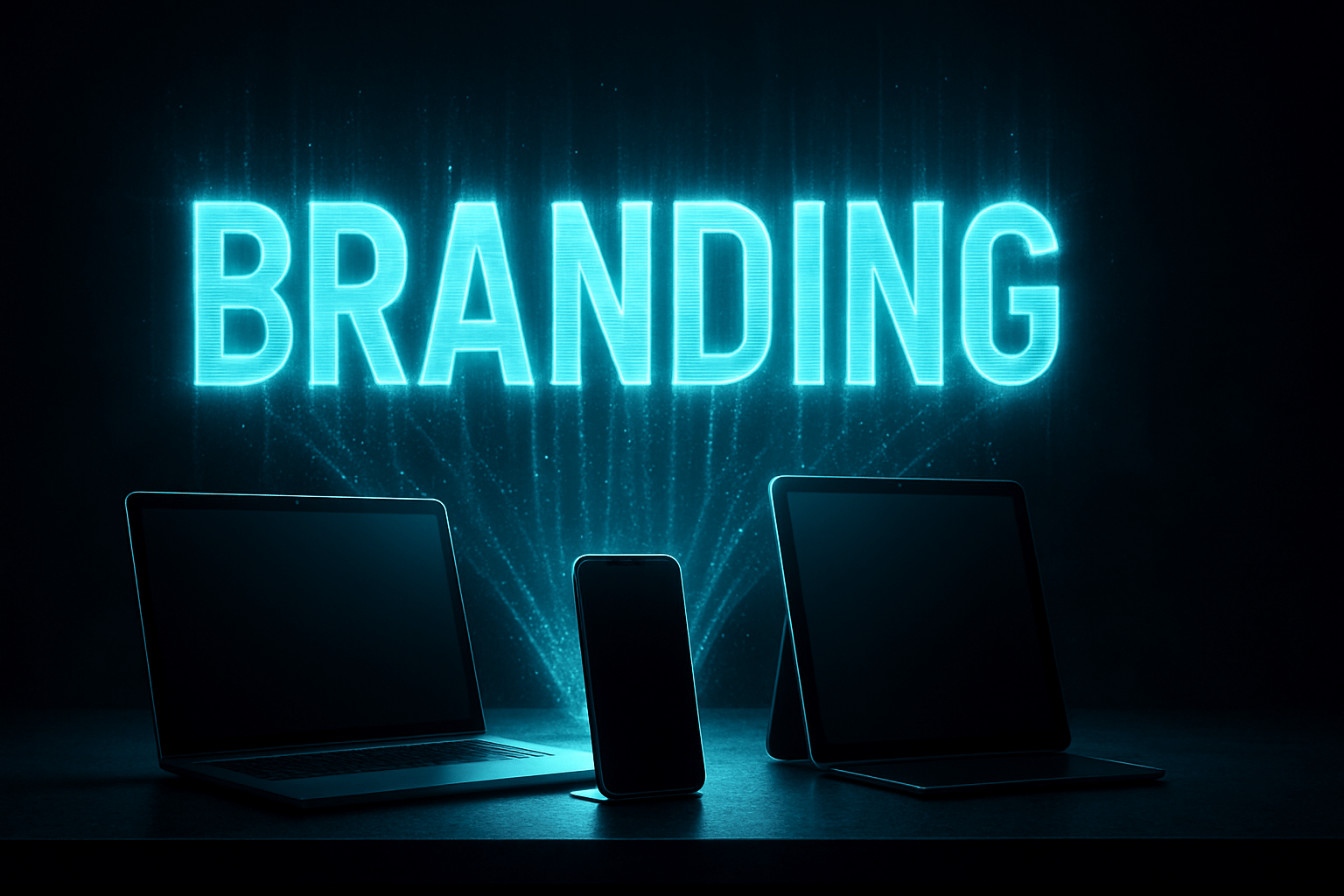
Transform your electronics retail brand with proven strategies. Get tracking, dashboards, and attribution models that drive measurable growth in 4-8 weeks.
